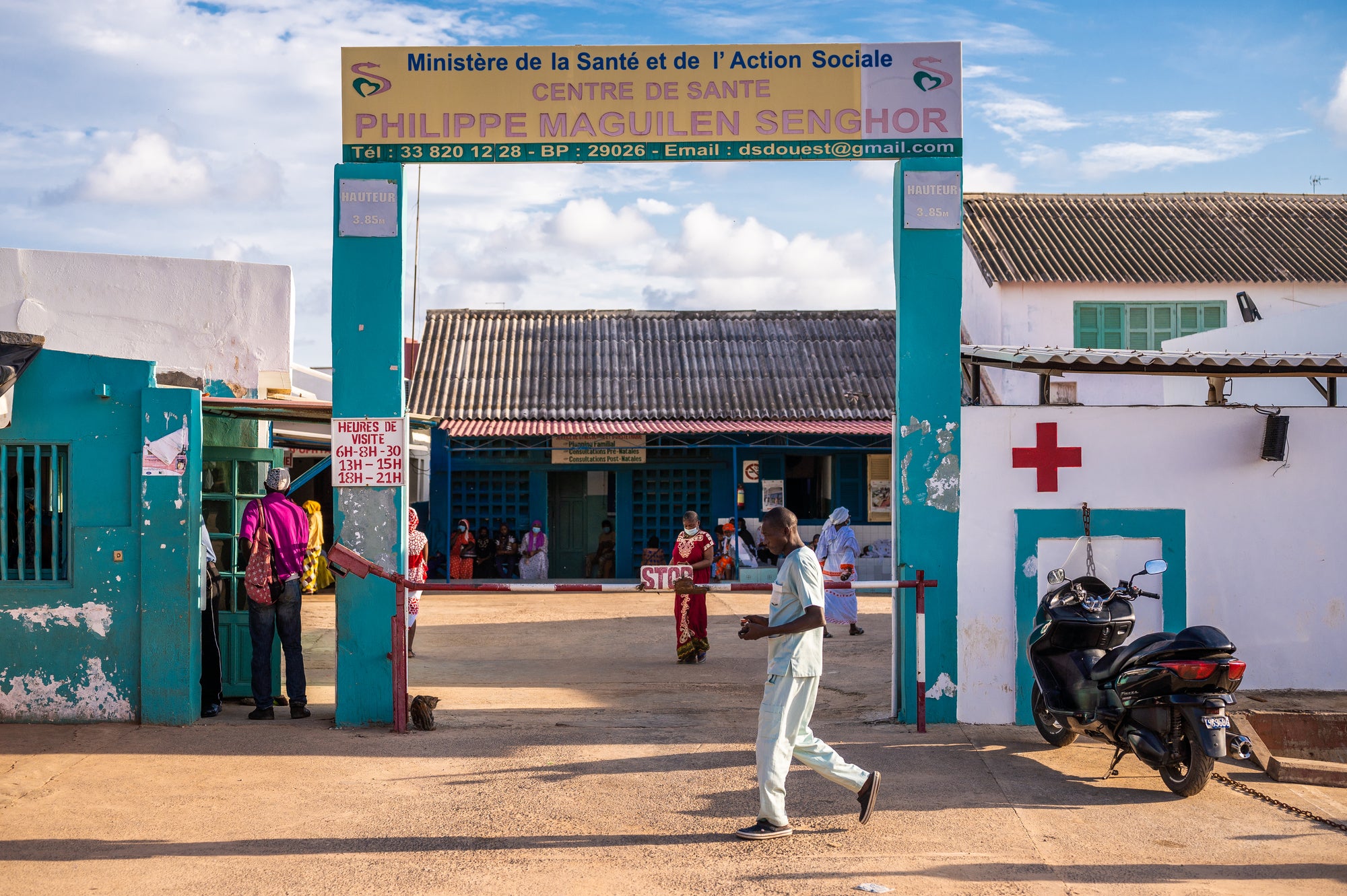Key Points
Vaccination coverage in Senegal increased rapidly between 2000 and 2007 and has been sustained thereafter.
During this time, Senegal shifted from underperforming to consistently outperforming their economic peers.

For the purposes of this study, we have defined Exemplars as countries that have proved to be positive outliers in increasing immunization coverage (as measured by DTP1 and DTP3 coverage). Senegal was chosen to represent the francophone region of Western Africa. The country showed rapid increases in DTP1 and DTP3 coverage between 2000 and 2007 and sustained high coverage for most years thereafter (see figure below); the exception was 2018, when a nationwide health worker strike temporarily disrupted coverage.,
During this period, Senegal shifted from underperforming to consistently outperforming its economic peers in DTP3 coverage. In the figure below, the blue line represents the global average relationship between GDP (purchasing power parity) and DTP3 coverage in low- and middle-income countries (LMICs), and the shaded area represents the 95% confidence interval. The observed GDP per capita and DTP3 coverage estimates for each country are shown in light gray. Senegal’s trajectory, shown in blue dots, along with other Exemplars in vaccine delivery, shows a rapid increase in DTP3 coverage followed by sustained high performance.
Senegal was selected as an Exemplar due to its improvements over time. Its improvement in DTP3 coverage from 2000 to 2017 exceeded that of its peers. See the Methodology section for more information on country selection.

DTP3 coverage. Institute of Health Metrics and Evaluation (IHME). Global Burden of Disease Study (GBD 2019). Seattle, WA: IHME; 2019. Accessed Jan 2024
Although coverage has improved across Senegal, coverage levels are highest in western areas which are generally more densely populated. (see figure below).
Heatmaps of DTP3 coverage

How did Senegal achieve and sustain these improvements? We have taken two complementary approaches to addressing this question: a quantitative decomposition of the determinants of vaccine coverage and a qualitative review of stakeholder perspectives on success factors in Senegal.
The quantitative decomposition explored how coverage changes in Senegal correlated with three drivers of vaccine coverage: facility readiness, intent to vaccinate, and community access (see figure below).
The quantitative results showed that community access—measured by travel time to facilities—is the strongest overall determinant of vaccine coverage. In areas with the highest access, a child may have a high probability of receiving three doses of DTP, even when intent to vaccinate or facility readiness are relatively low (see right panel of figure below).
Community access to DTP3 vaccination by quartile

Liu PY, Fullman N, Gueye D, et al. Quantifying drivers of childhood vaccination in Senegal: a modeling analysis based on the Exemplars in Vaccine Delivery Framework. Working paper.
Community shows the strongest overall effect: in areas with low access, as shown in the left panel of the figure above, a combination of strong intent to vaccinate and good facility readiness can also lead to high coverage. All three drivers together highlight a need for contextual understanding of barriers faced by communities when seeking to improve drivers of coverage.
Through our qualitative review, we explored Senegal’s vaccine delivery system to generate hypotheses about how they improved community access, intent to vaccinate, and facility readiness, all of which contribute to high and sustained vaccination coverage. In addition, we explored how Senegal’s immunization system functioned during the COVID-19 pandemic, which was still surging in early 2021 when most of the data was collected.
This review builds on an extensive body of knowledge about the essential components of an effective vaccine delivery system. Two guidelines synthesize this knowledge. Global Routine Immunization Strategies and Practices (GRISP) describes a comprehensive framework of strategies and practices for routine immunization. The Reaching Every District (RED) approach defines five strategies to equitably increase immunization coverage rates: (1) planning and management of resources, (2) reaching all eligible populations, (3) engaging with communities, (4) conducting supportive supervision, and (5) monitoring and using data for action. In addition, evaluations such as the Africa Routine Immunization System Essentials project and the Full Country Evaluations conducted for Gavi, the Vaccine Alliance have documented factors contributing to coverage improvements. These assessments have also shed light on how vaccination programs are being implemented and on the various obstacles to immunization. ,
